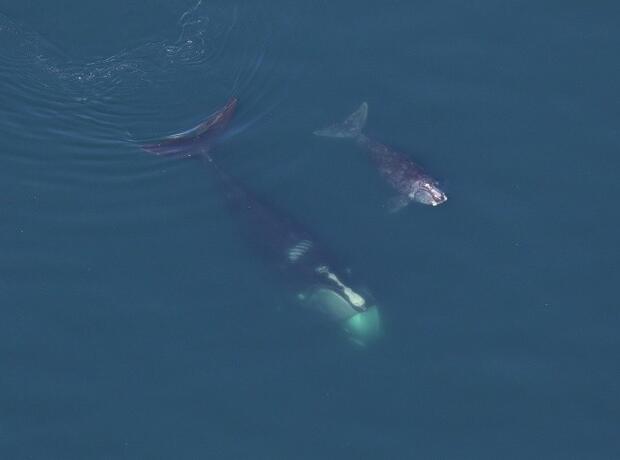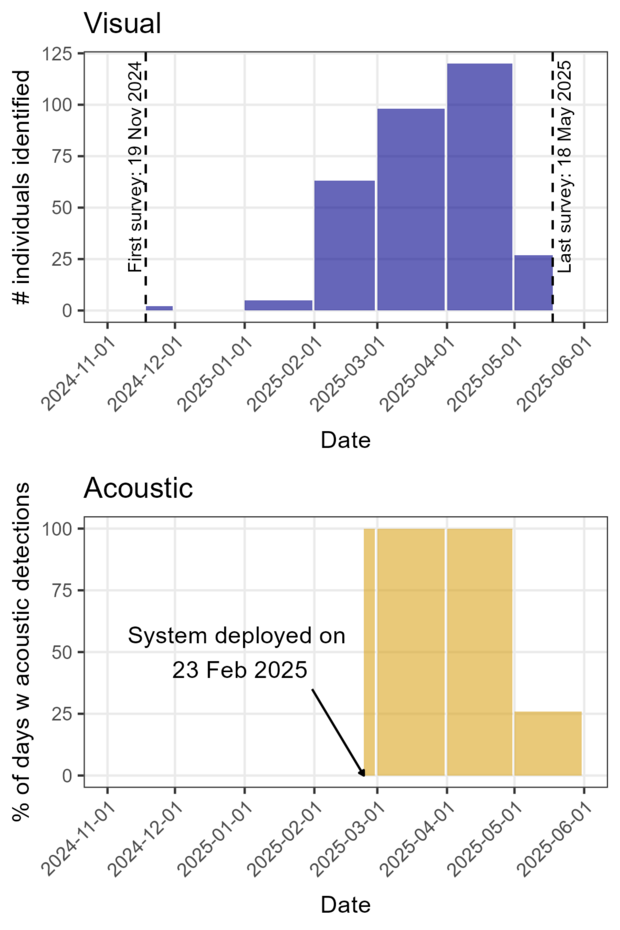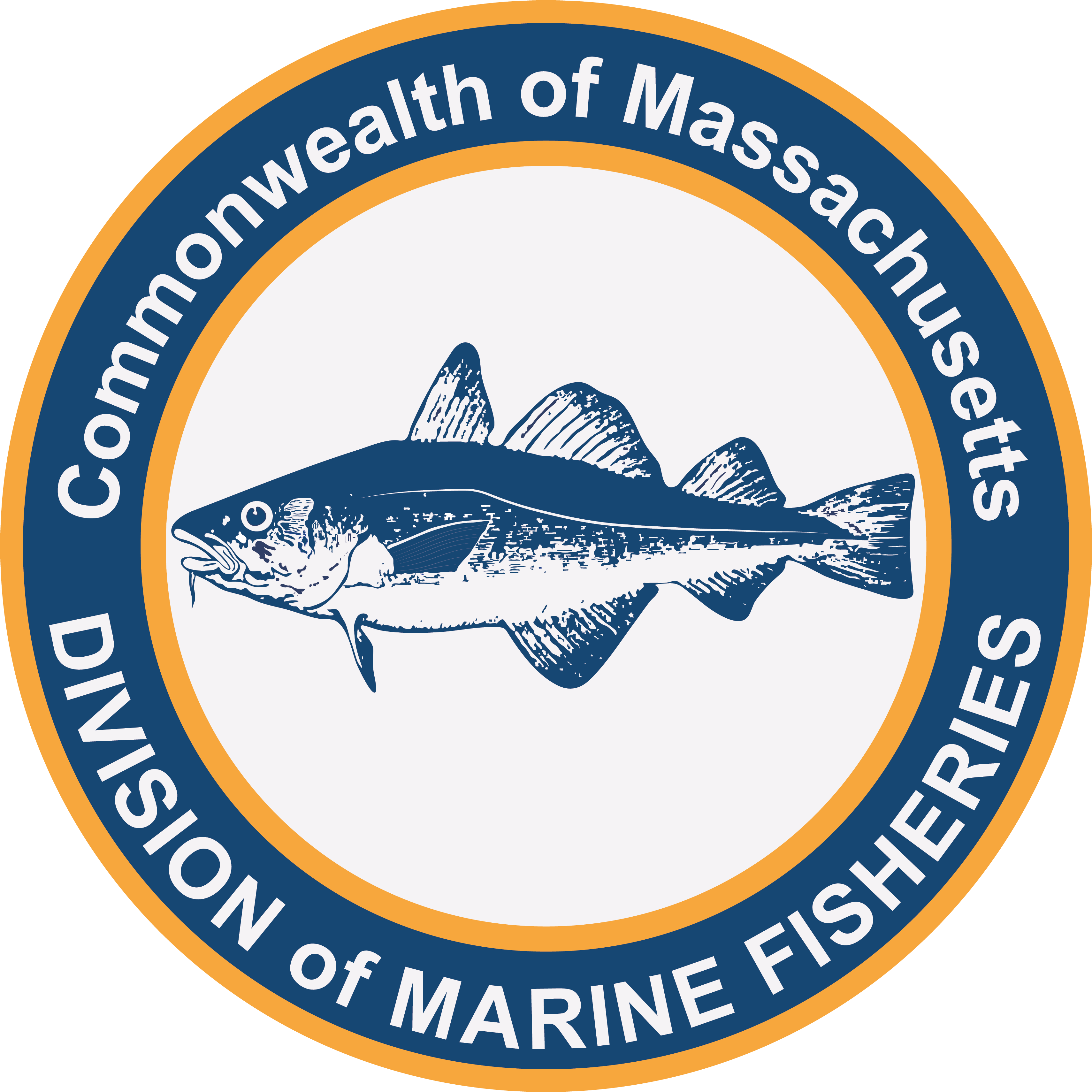- Division of Marine Fisheries
North Atlantic right whales return each year to feed in Cape Cod Bay and coastal Massachusetts waters in the early winter through late spring. The North Atlantic right whale is one of the most endangered large whale species and their recovery is currently threatened by entanglement in fishing gear and collisions with ships. As they annually return in high numbers to our waters, DMF implements seasonal conservation measures to protect right whales from entanglements and vessel collision, including fishing gear closures and a small vessel speed restriction in Cape Cod Bay. In addition, derelict gear removal efforts occur in the seasonal closure to remove any lost or abandoned gear from the area.
This year marked DMF’s 27th year partnering with the Center for Coastal Studies (CCS) to conduct aerial surveillance and habitat monitoring. By the latest estimate, there are approximately 370 individual right whales remaining in the population, and approximately half of them (n = 178) were sighted in Cape Cod Bay between mid-November 2024 and the end of May 2025. The aerial surveys began this season on November 19 in Cape Cod Bay and right whales were sighted on that first flight. There were modest sightings through the end of January (2–5 individuals), with an increase to 63 individuals sighted in the month of February. The aerial team continued to see high numbers of right whales in Cape Cod Bay in March (98 individuals) and April (120 individuals) concurrent with reports of high densities of their copepod prey.
In April, the zooplankton composition was dominated by spe cies that tend to aggregate at the surface during the day. This meant the right whales were also often feeding at the surface making them more visible to researchers as well as beachgoers, especially at beaches in Provincetown. In May, 27 individuals were sighted in CCB with all sightings occurring within the first half of the month.
By the end of the 2025 calving season in the southeast United States, 10 mother/calf pairs were documented. There are approximately 70 reproductive females in the population, and in the last decade, the average has been 13 births per year. The first mother/calf pair was sighted in Cape Cod Bay on March 11, and on April 14, a female known as “Monarch” was sighted in Cape Cod Bay with a new calf in tow. This previously undocumented calf brought the total for the year to 11 and prompted some questions about where this birth may have occurred. By the end of the season, eight of the 11 known mother/calf pairs had been sighted in Cape Cod Bay.
The 2025 season also brought sightings of right whales outside of the dense aggregations seen in Cape Cod Bay. In April, right whales were also sighted around Nahant, the Boston Harbor Islands, and Hull. Some of these sightings triggered federal dynamic Slow Zones requesting large vessels to limit their speed to 10 knots or less. In addition, on two separate days (April 15 and 17) right whales were sighted in the Cape Cod Canal, temporarily closing this route to vessel traffic.
New Efforts
The aerial surveys routinely monitor Cape Cod Bay, and starting in 2022, the coverage areas expanded to include waters from the New Hampshire border to the shipping lane south of Nantucket. This season, 46 individuals were sighted in these other areas by the CCS aerial survey team, 13 of which the team did not capture in Cape Cod Bay this season—the CCS photo-identification efforts captured 191 individuals in total across all habitats!
With the addition of the two real-time acoustic monitoring systems in late February, we had a new tool this season to keep tabs on the whales (see page 1 for more information). At the Cape Cod Bay monitoring site, right whales were acoustically detected every day between when it was deployed and May 6, with positive detections also on May 8 and 10. At the Cape Ann buoy, right whale detections on April 20 and 29 triggered federal Slow Zones.
Management of State Waters
DMF dynamically manages the lifting of seasonal fishing gear closure in state waters and the seasonal small vessel speed restriction in Cape Cod Bay. In 2025, both the fishing and vessel speed restrictions were lifted on May 14 based on low visual sightings of right whales and a sharp decline in acoustic detections from the real-time system.
Data collected during visual surveys provide important information on whale behavior, entanglements and injuries, and calving rates, but visual surveys cannot occur in all weather or at night. Passive acoustic monitoring can fill in some of the gaps in visual survey by providing information on the acoustic presence of whales year-round and around the clock. Together, these two methods of monitoring North Atlantic right whales can help to inform effective conservation of this species while they are present off our shores.
By Leah Crowe, Protected Species Science and Monitoring Lead


